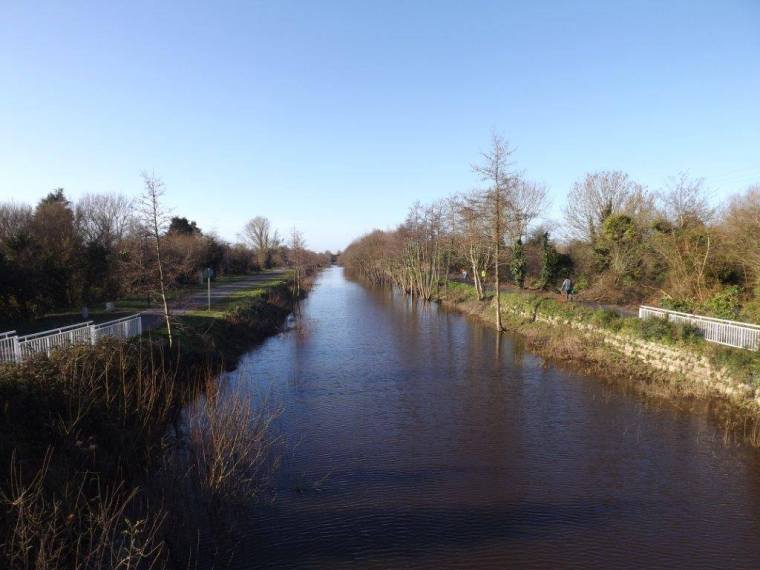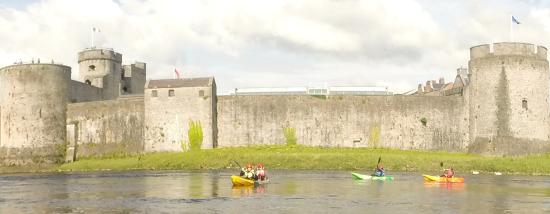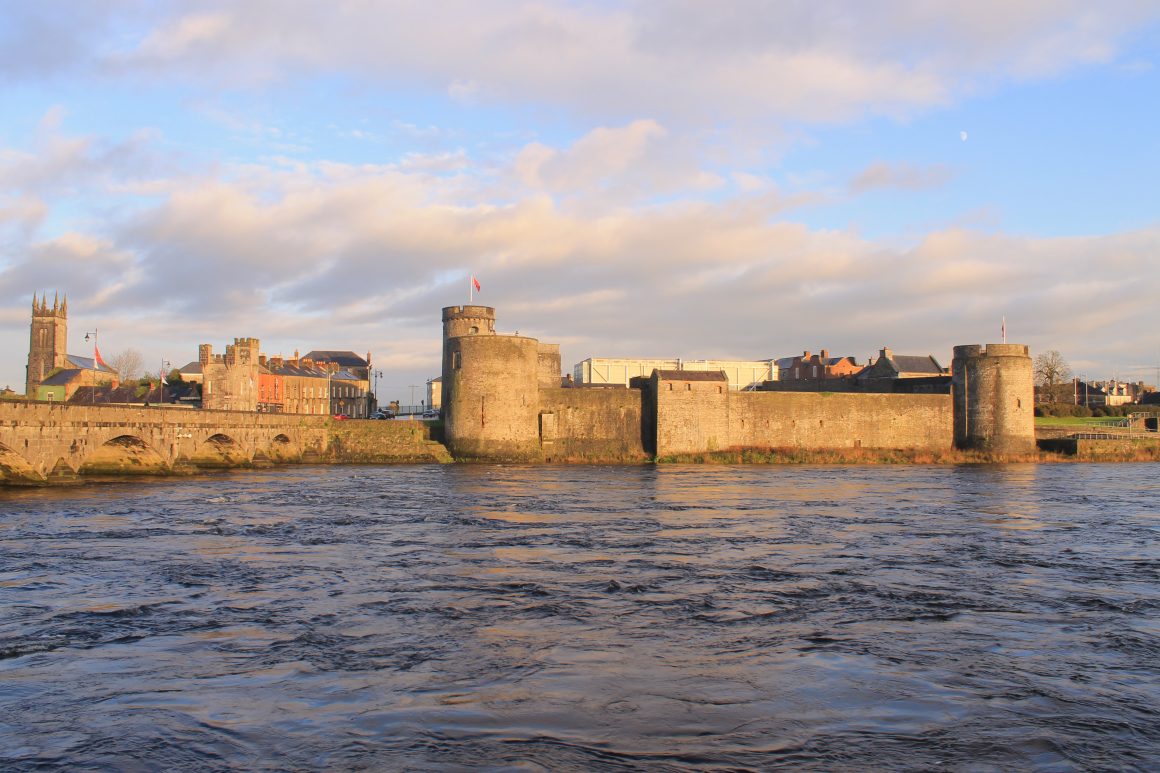There has been much talk over the last two decades of Limerick turning to face the river and to incorporate the river into the life of the city. This has been promoted by the developments of Arthur’s Quay park, the Boardwalks, the slipways by the Hunt Museum, the Main Drainage project and by the annual Riverfest weekend at the start of May. Firstly it’s important to say each of these developments were well intentioned and that each has had varying degrees of success but before considering any of those it’s important to talk about Limerick’s actual relationship with the river Shannon.
The name Shannon comes from the Irish Sionna. It is possible the name is a corruption of the name Senuna, meaning “old honoured one”. According to Irish mythology, the river was named after a woman named Sionann, the granddaughter of Manannán mac Lír. She went to Connla’s Well in search of wisdom, despite being warned not to approach it. While there, the well rose up and flooded, drowning Sionann and carrying her out to sea. It is interesting the earliest myths could be interpreted as a warning against the dangers of the Shannon flooding. It is believed that Sionann then became the goddess of the river.
A striking point about most discussions on how Limerick should “embrace” the Shannon is that the commentators generally act as though the river is just something pleasant to look at. It is possible that merely looking at a river misses the point slightly. Limerick should be trying to get as many activities as possible happening on the river. Limerick people should be encouraged to boat on the river, where it is safe they should be encouraged to swim in the river, to fish in the river. A river like the Shannon should be re-woven into the fabric of city life.
With that said, there are several, slightly hidden activities occurring on the river. Limerick has a very active rowing scene. It has an active fishing scene (some families such as the Clancys have been fishermen for about 1,000 years). It has the annual swim arranged by the Limerick Masters Swimming Club. It has an active amateur and tourist kayaking scene, with companies like Nevsail Sports taking tours out on the river. If you go out further, the reed beds of the Shannon estuary from Coonagh out are considered some of the finest in the British Isles, and are still harvested by the families of men who were harvesting reed when castles like King John’s and Bunratty were being built.
(Incidentally, the 2016 swim in the river takes place on the 2nd of July. See limerickmasters.com, the time will be confirmed closer to the date. It is an 1800 metre swim from St. Michaels Rowing club to Thomond bridge and back. See https://www.flickr.com/photos/23890215@N06/9345195729/in/photostream/ for excellent photos of the 2013 event)
What is interesting is that when improvements to the riverscape are discussed, the consultation on how to get people utilising the river better rarely seems to take much interest in the current users of the river. Indeed, actually getting people to engage with the river, as opposed to looking at it, seems to be a remote preference. Limerick people are not fully aware of the history of their river, or how best to enjoy it.
Limerick Civic Trust has done huge work in improving the river walk between the University of Limerick and the city centre. They have also been responsible for the clear-up around the Corbally baths, along with several volunteer groups such as Limerick Riverpath Volunteers. Each of these initiatives helps integrate the river into the life of the city. The interaction between the city and river is not about reaching an end-goal but rather about establishing an on-going process where the river and city intertwine.
 Canal Bank photo copyright of Limerick Civic Trust highlighting their recent work on the UL to City Centre pathway.
Canal Bank photo copyright of Limerick Civic Trust highlighting their recent work on the UL to City Centre pathway.
With that mind, and only incidentally referring to the proposed new bridge, it’s important to recognise the significant developments made in the last two decades. The main drainage, despite cost over-runs, has hugely improved the quality of water flowing through the city. This is perhaps best evidenced by the sight of wildlife returning to parts of river in the city, the fact that some swimmers are venturing back into the river, and the return of the annual swim. With the on-going success of the Great Limerick Run it would be great to see a Great Limerick Triathlon added to the city calendar. The flow of water through the city, and the difference between high and low tides would present significant challenges to any organisers but ones that could be overcome with proper scheduling.
After two decades of working to rehabilitate the water quality of the river, and after the developments of the boardwalks, it is time to expand on this good work. The new Mungret Park is going to be a huge addition to the city, perhaps the next big parkland project could be integrated riverside parks from Long Pavement, Corbally, the University of Limerick out towards to Westfields and onwards towards Coonagh. This would obviously be a multi-year, multi-phase plan but one that would be significant legacy for our generation to leave the following ones. These areas all exist as individual areas at present with varying degrees of access but is it unrealistic to imagine integrated pathways for runners and cyclists, safe areas for boating, swimming, fishing and other recreations? Obviously such works could only be undertaken if they could be achieved without damaging the wildlife of these areas. Cities like Hamilton in New Zealand show that river side parklands can be developed and integrated into a city over the course of several years.
One of the best ways to see the city is from water level to fully get a sense of how the city meets the river. For example, Athlunkard derives from “Áth Longphuirt”, meaning “ford of the longphort,” which itself refers to a 9th-century Viking longphort or defended ship encampment which was once located there as it was ford over the Shannon. The rowing club there is continuing a tradition set down a over millennium ago. We are walking ancient pathways across the city, and the river is the oldest of the paths we can take. We should be thinking about how we want the relationship between the city and the river to continue. If 20 million euro had to be spent on an amenity by the river, I’d suggest the beginnings of a proper river side park network that could protect and preserve the river and its surrounds for the future.

Kayaking by the Castle, image copyright of Nevsail Sports.
